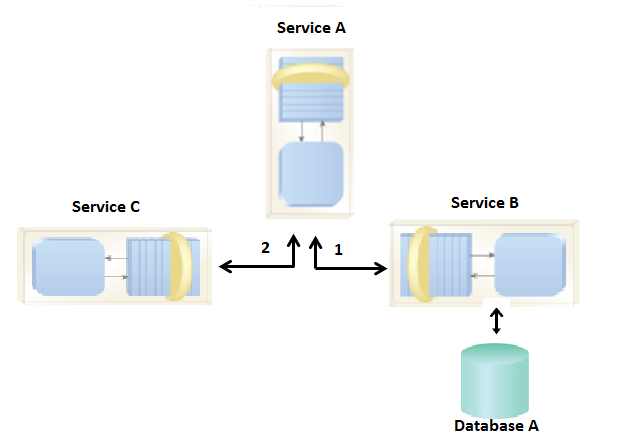S90.09 – SOA Design & Architecture Lab Exam Details
In my earlier blog post I shared my experiences taking SOA Architect Certified. In this post, I will shed light on the SOA Design & Architecture Lab Exam (S90.09).
The S90.09 lab is a two hour exam that requires you to answer twenty scenario based complex design problems. Each question in this exam has a scenario and a problem statement. The passing score for this exam is 60%. So you need to get 12 of the 20 questions correct. To successfully pass the exam, you need to apply all the concepts, terminology and patterns that you have learnt while preparing for the previous four exams.
To better understand the types of questions you can expect I have created two example scenario questions below:
Question 1
Service Consumer A needs to send a message to Service A. To successfully complete the request, Service A needs to send the message to Service B. Upon receiving a response from Service B, Service A computes a response and sends the message back to Service Consumer A.
Service Consumer A sends the message in XML format based on Schema X. However Service A only accepts XML messages based on Schema Y. Also, Service B is a legacy service and only communicates using CSV format. What needs to be done to ensure a successful message transfer?
A. The Contract Centralization pattern can be applied so that Service A and Service B accepts messages using Schema X.
B. The Data Format Transformation pattern can be applied between Service A and Service B so that messages can be converted between XML and CSV. The Data Model Transformation pattern can be applied so that messages from Consumer A can be processed by Service A and vice versa.
C. The Official End Point pattern can be applied to create a standardized XML schema to be used by all participating services and consumers
D. None of the above answers
Question 2
The figure below shows a Service Composition Architecture where Service A communicates with Service B and Service C. Service B uses Database A which is a shared database.
It has been brought to your attention that there has been degradation in the performance of this composition. After some analysis, it has been found that Service C has become part of several other compositions and is being heavily used. This has caused Service C to become unreliable. The load on the shared database has also increased severely causing Service B to become unstable. How can this Service Composition Architecture be changed to improve performance?
A. The Service Autonomy pattern can be applied to Service C to make it more reliable. To address Service B’s instability, the Redundant Implementation pattern can be applied.
B. The Service Data Replication pattern can be applied to Service B by giving a dedicated database that has a copy of Database A. The Redundant Implementation pattern can be applied to Service C to make it more reliable
C. The State Repository pattern can be applied to Service A so that it can store Service A’s data while it waits for responses from Service B and Service C.
D. None of the above answers.



